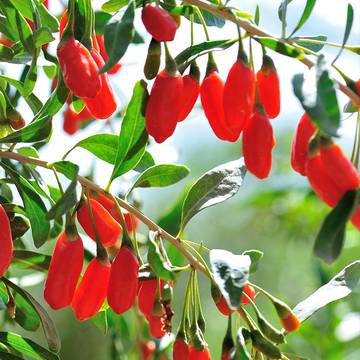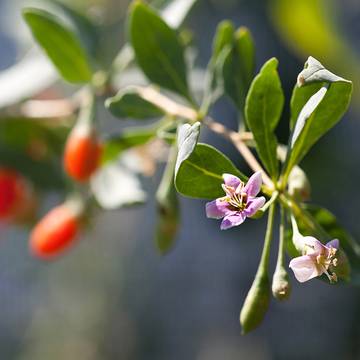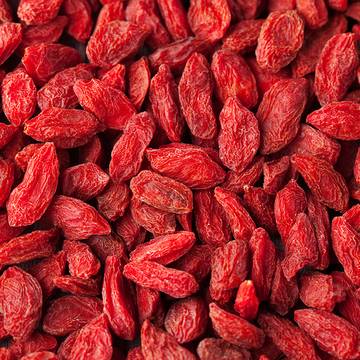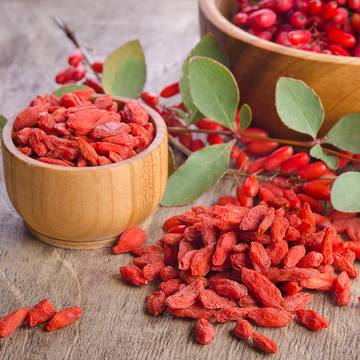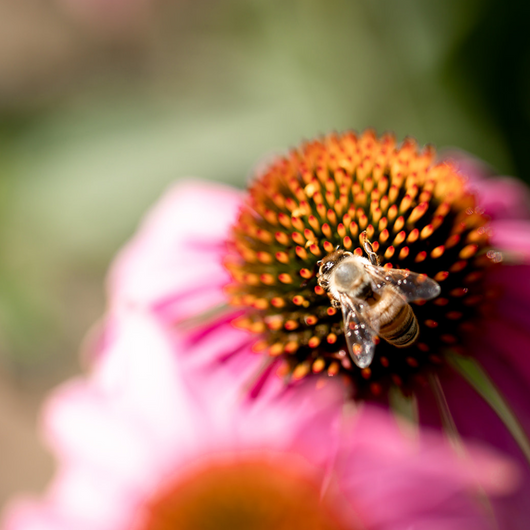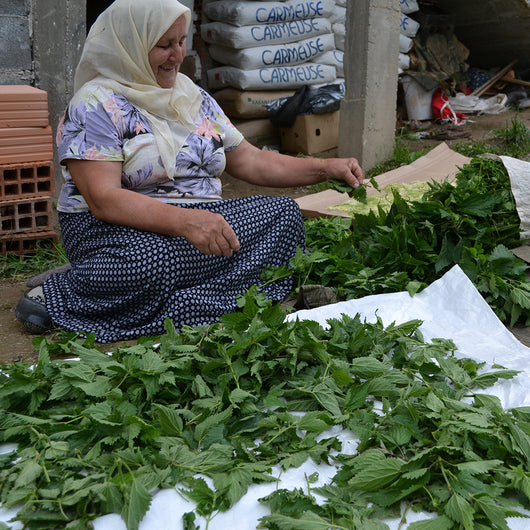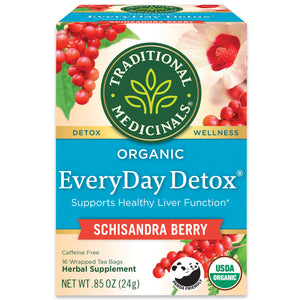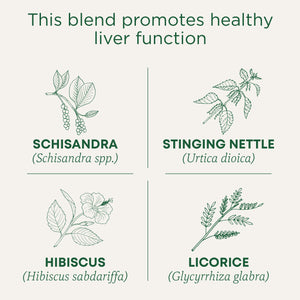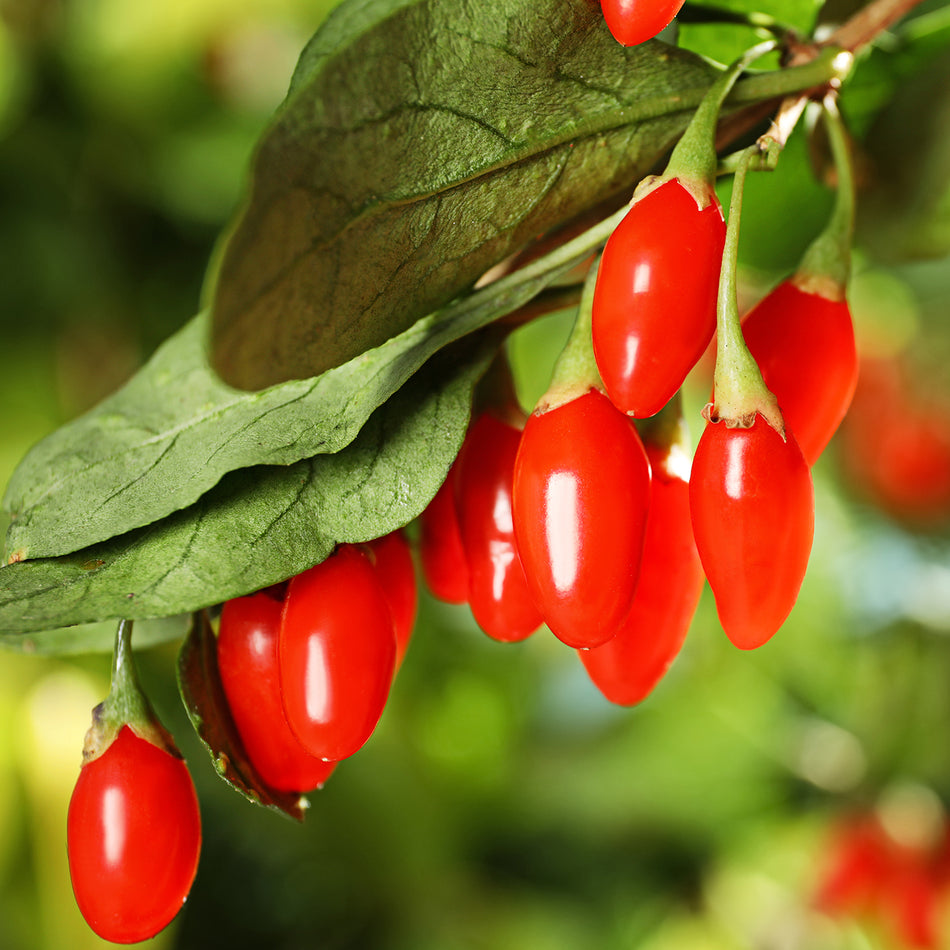
Goji
Lycium barbarumGoji has been used for thousands of years, in traditional Chinese, Korean, and Japanese medicine for its health and longevity-sustaining properties.*
TCM superfood and “enhancer of life.”
What are the benefits of Goji?
Bright, orange-red goji berries have been used for centuries across Asia and in Traditional Chinese Medicine (TCM) as a nutritive tonic for the liver, kidneys, eyes, and lungs.* Energetically, this herb is considered to be a yin toner that’s sweet in taste and neutral in application. It’s a fundamental herb in TCM and is commonly used to enhance the quality and length of life.
Containing carotenoids and flavonoids, this fruit is also an antioxidant with the ability to boost overall health by supporting the body’s defense systems.* Appropriately named a “superfood,” this tart and semi-sweet fruit contain vitamins A and C, riboflavin, potassium, iron, magnesium, copper, and zinc. This is likely why it’s traditionally consumed beyond herbal formulas, and infused into everyday Chinese recipes like soups, stews, porridges (a.k.a. congee), juices, wines, and liqueurs.
Folklore & Historical Use of Goji
While sometimes called “lycium” due to its Latin name, its common name in Chinese is gou qi zi or “wolfberry.” Gou translates to dog or wolf, and some say it gained this name because of farmers witnessing the animals eating the berries. Li Shizhen, a famous Chinese herbalist and acupuncturist of the 1500s, recorded that it may be from a Taoist text where it says a 1,000-year-old goji took on the shape of a dog, so it was named gou.
The four-thousand-year-old oracle bone script is currently the earliest known systematic form of Chinese writing , and some say “gouqizi” was included, while others remain unsure if this is in reference to the plant or a name of something else. It was also recorded in a formula taken by the first emperor of the Qin Dynasty (259 BC–210 BCE). It was historically used by at least a dozen of China’s 55 ethnic minority groups and is still one of the most popular herbs and medicinal foods today.
Botany, Species, Habitat
Not only do these small fruits look like ripe cherry tomatoes, but they’re also related. Goji is a nightshade, and a part of the Solanaceae family, along with potatoes, eggplants, and peppers. This woody, vining shrub generally grows between three to 3-5 tall, though they can reach nearly 12 feet in their native habitats. While these berries do well in most of the U.S.—in Hardiness Zones 2-7—they’re native to China, where they’re grown in abundance for the herbal marketplace.
Goji grows best in highly fertile soil that’s well drained. It thrives with plenty of sunshine and will begin to fruit two years from seeding and bear full yield in four to five years. Generally, fruit comes in the mid-summer and is best picked by hand, to avoid bruising.
When To Use Goji
Regularly to balance the organs of elimination.
Daily to tonify the body’s defense systems.
Often to promote overall vitality.
The Business of Sustainable Plants
Our business is rooted in plants, and for us, it’s a business imperative that we care for the ecosystems where these plants live and thrive. We believe that everything is interconnected, which means supporting ecosystems and the farmers and collectors who harvest and gather our herbs. Finding opportunities to reduce or eliminate emissions at the source, we support organic and regenerative farming practices as well as voluntary certifications like Organic and FairWild. These ensure the absence of pesticides, herbicides, as well as the ongoing sustainability of wild collection, and the health and livelihoods of the collectors who forage. Josef Brinckmann, Traditional Medicinals’ Research Fellow, Medicinal Plants and Botanical Supply, asserts, “Everyone has a role to play in preserving biological diversity. One way of doing that is by equitably supporting the local people to serve as stewards of the land.”
It Starts with Organic
We choose to source organic because we believe in the positive impacts it has on environmental sustainability, biodiversity, and overall ecosystem health. Organic helps us increase transparency while prioritizing consumer well-being and farmer success, which is key to producing the high-quality herbs we source. In 2021, we procured 2.73 million pounds of certified organic herbs, over 99.7% of our total botanical herbs purchased. Volumes were down slightly from FY20 due to timing of inventories received.
The impact from organic farming creates a vital ecosystem through improved soil health, water quality, pollinator habitats, and biodiversity. Organic farms also have increased carbon sequestration potential through long-term carbon storage in the soil, helping to mitigate climate change.
One of the benefits of organic that we most value is farmer health. We care deeply about the people who produce our herbs, ensuring that they are not exposed to synthetic chemicals found in conventional agriculture.
Fair Trade
We believe that everyone deserves a fair wage for hard work. That’s one of the reasons why we’re committed to fair trade. Traditional Medicinals® is a registered Fair Trade “brand holder”, “licensee” and “manufacturer,” and our products are certified by Fair Trade USA, an independent third-party certifier. We were an early adopter of Fair Trade, having launched our first fair trade tea product in 1998, just one year after Fairtrade International (FLO) was established. We continue to work closely with our network of producers to help them to implement fair trade standards and get certified.
EveryDay Detox® Schisandra Berry Tea
Additional Information
Legal Disclaimer:
The information and other content in this article are designed to provide a general overview of the botany, cultural history, and traditional uses of this herb. It is not intended and should not be construed as health advice. Every person is unique and you should consult with your health care provider before using any herbal product or supplement.

